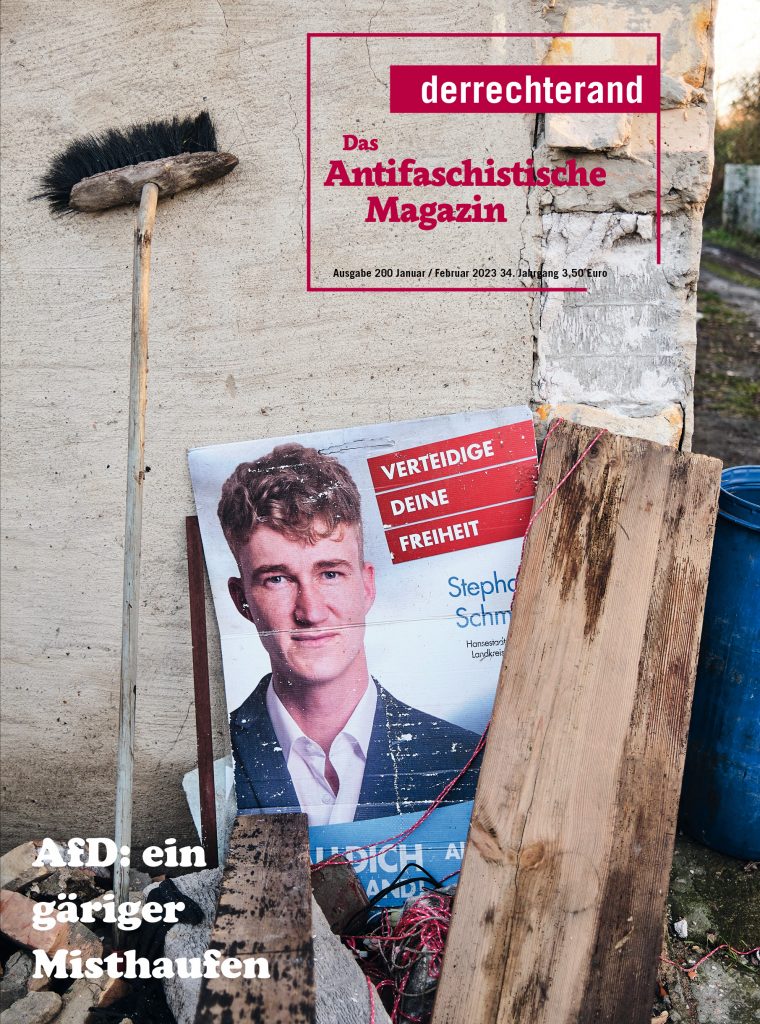James Cowles Prichard and the Linguistic Foundations of Ethnology
Abstract
This article examines the English scholar James Cowles Prichard's attention to language and comparative philology within his wider project on the natural history of man. It reveals that linguistic evidence was among the most important elements for Prichard in his overarching scientific aim of investigating human physical diversity, and served as the evidential foundation for his ethnology. His work on Celtic comparative philology made him not only one of the earliest British adopters of German comparative grammar, but a comparative philologist of European stature in his own right. More generally, linguistic evidence helped Prichard to keep his magnum opus, Researches into the Physical History of Mankind, as logically ordered as possible, and therefore to turn ethnology into a discipline with analytical aspirations on a global scale.
Quelle: https://onlinelibrary.wiley.com/doi/10.1002/bewi.202200036?af=R
INTRO – 10 Jahre AfD
Liebe Leser*innen,
»Was hat es auf sich mit der neuen Partei?«, fragte Jens Breuer im Frühjahr 2013 nach der Gründung der »Alternative für Deutschland« (AfD) in der Ausgabe 142 unseres Magazins. Das öffentliche Interesse an der neuen Partei war groß, ihre Bezeichnung als »Rechtspopulist*innen« verharmloste schon vor zehn Jahren ihr Potenzial. Breuer ordnete sie in seinem Artikel als »am rechten Rand angesiedelt« ein – und sollte damit Recht behalten, auch wenn seine Einordnung in den vergangenen zehn Jahren fortlaufend aktualisiert werden musste. Rund fünf Jahre nach ihrer Gründung prangte auf dem Cover unseres Magazins der Schriftzug »Faschist« auf dem Porträt von Björn Höcke. Das Verwaltungsgericht Meiningen zog ein Jahr später nach und erlaubte es, den Thüringer AfD-Vorsitzenden öffentlich als Faschisten zu bezeichnen, weil das Werturteil »auf einer überprüfbaren Tatsachengrundlage beruht«.

Die Analyse der AfD und die dazugehörigen Recherchen sind seit 2013 ein großer Teil der mittlerweile 200 Ausgaben unseres Magazins, dessen Initiator*innen 1989 auf die damaligen Wahlerfolge am rechten Rand reagierten. Sie schrieben in der ersten Ausgabe: »Es ist dem Neofaschismus in einem qualitativ neuen Ausmaß gelungen, Massenstimmungen für sich zu organisieren.« Es gebe ein »sich täglich reproduzierendes Potential neofaschistischer Gruppierungen«, das »mobilisierungsfähig in mehrfacher Hinsicht (ist). Als Gewaltreserve gegen Linke und Minderheiten. Als Wähler*innenreservoir. Als gesellschaftlicher Stimmungserzeuger.« Es war die Zeit des Aufstiegs extrem rechter Parteien wie der »Deutsche Volksunion« (DVU) oder »Die Republikaner« (REP), die sich teils erfolgreich rechts der CDU profilieren konnten. Die Union und ihre Kreise reagierten darauf mit einem deutlichen Rechtsruck.
ABO
Das Antifa Magazin
alle zwei Monate
nach Hause
oder ins Büro.
Die DVU fusionierte 2010 mit der NPD in die Bedeutungslosigkeit und auch die REP sind mittlerweile Geschichte. Geblieben sind die Kontinuität fehlender Abgrenzung besonders konservativer Kreise nach rechts beziehungsweise ihre unverkennbaren Anbiederungsversuche. So hatte der niedersächsische CDU-Landesvorsitzende Wilfried Hasselmann 1989 eine Zusammenarbeit mit den REP zumindest auf kommunaler Ebene befürwortet, beim Tabubruch im Thüringer Landtag lösten CDU und FDP gemeinsam mit der AfD rund 30 Jahre später eine von der extremen Rechten ersehnte Regierungskrise aus.
Anders als in der Gründungszeit des Magazins der rechte rand sind wir heute mit einer Partei und ihrem Umfeld konfrontiert, die sich darauf eingerichtet haben zu bleiben. Umso wichtiger ist es, ihren Umtrieben auch weiterhin »Recherche, Analyse und Perspektive« entgegen zu setzen. Dass die Arbeit Früchte trägt, zeigt, wenn die »Sezession« aus Götz Kubitscheks »Institut für Staatspolitik« von uns als »dem sicherlich einflussreichsten antifaschistischen Hetz- und Desinformationsorgan der Republik« spricht.

Doch ohne euch Leser*innen sowie ehrenamtlichen Autor*innen und Fotograf*innen würde es das Magazin nicht geben, deshalb vielen Dank für das Interesse und vielen Dank für Eure Arbeit.
Eure Redaktion
Der Beitrag INTRO – 10 Jahre AfD erschien zuerst auf der rechte rand.
Challenges of Multimethod and Mixed Methods Designs in Museum Research
In this article, we draw on two research projects on museums to present how we combined qualitative and quantitative methods (e.g. semi-structured interviews, non-standardised observations, focused ethnographies, ethnographic observations and conversations; standardised surveys and observations), which designs we used, and which opportunities and challenges we encountered. Given today's pluralised museum landscape, the research involved questions of whether and to what extent museums are oriented to offering experiences and which role museum guards play beyond their security function. We show how combining different methods can be particularly fruitful for examining fields characterised by a range of tensions from different perspectives. On the one hand, this allows us to grasp the (conflictual) interplay of different dimensions (actors, exhibition aesthetics, concepts, discourses), and on the other hand, we can broadly situate our objects of research and interpretations. The first challenge we discuss is the temporality of the empirical procedure, including questions of how linear and iterative approaches as well as procedures running in parallel and sequentially can be integrated. Secondly, we ask to what extent findings from different approaches and museums can be compared with each other during the analysis—broadly or deeply, with regard to the number of museums or dimensions.
Quelle: http://www.qualitative-research.net/index.php/fqs/article/view/3988
Qualitative Social Research at a Distance: Potentials and Challenges of Virtual Interviews
Due to the coronavirus pandemic, the practice of qualitative interviewing has recently undergone a strong trend toward virtualization. The gold standard of conducting face-to-face interviews had to be translated into a digital format, enabling researchers to conduct interviews at a distance. In this article, we reflect on the opportunities and limitations of virtual interviews and consider epistemological consequences in the wake of their increased use and acceptance. Methodological questions arise regarding empirical topics, sampling, social interview situations, as well as the technical setting. We further reflect on the advantages and disadvantages of interviews at a distance and suggest that this novel form of interviewing may soon become the new normal.
Quelle: http://www.qualitative-research.net/index.php/fqs/article/view/4010
Mixing Standardized Administrative Data and Survey Data With Qualitative Content Analysis in Longitudinal Designs: Perceptions of Justified Pensions and Related Life Courses
Citizens are more likely to accept reforms of welfare state arrangements if they perceive them as just and reasonable. However, the concept of social justice is multidimensional. For instance, in discourses on old-age security, justice is addressed in terms of meritocratic principles, demands, processes, redistribution, gender, or intergenerational equity.
In the study "Lebensverläufe und Altersvorsorge" (LeA) [Life Courses and Old-Age Provision], respondents could express their wishes for retirement and the German statutory pension system in an open-ended question. We draw on this study to illustrate who addresses which social justice dimensions and how. Methodologically, we mixed standardized administrative and survey data with qualitative content analysis.
More generally, we aim to highlight the rich analytical potential and challenges of open-ended questions. We reflect on methodological issues, e.g., the time-consuming preparation and interpretation of an enormous amount of non-standardized data, the interview situation compared to conventional qualitative interviews as well as interpretation difficulties due to missing contextual information. Furthermore, we prepared the open-ended question for quantitative analysis and integrated it into the data set while preserving its qualitative character. Finally, to illustrate options for joint analyses, we combined content analysis results with sequence/cluster analysis for longitudinal quantitative data.
Quelle: http://www.qualitative-research.net/index.php/fqs/article/view/4003